Themed collection Journal of Materials Chemistry A Emerging Investigators

Journal of Materials Chemistry A profiles: contributors to the Emerging Investigators 2019 issue
Journal of Materials Chemistry A profiles contributors to the Emerging Investigators issue.
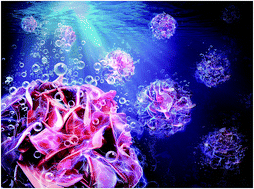
J. Mater. Chem. A, 2019,7, 23267-23279
https://doi.org/10.1039/C9TA90245G
Colloidal nanoparticle inks for printing functional devices: emerging trends and future prospects
Emerging trends and future prospects for nanoparticle synthesis and colloidal ink formulation, additive printing processes, and functional devices are highlighted.

J. Mater. Chem. A, 2019,7, 23301-23336
https://doi.org/10.1039/C9TA07552F
The effects of mechanical constriction on the operation of sulfide based solid-state batteries
This review explores the effects of mechanical constriction on the phase stability of ceramic-sulfide solid-electrolytes.

J. Mater. Chem. A, 2019,7, 23604-23627
https://doi.org/10.1039/C9TA05248H
Review on anionic redox in sodium-ion batteries
In this review, systematic overlook of recent research on anionic redox in SIBs is given, along with discussion of relative theories that explain the mechanism of activating and stabilizing anionic redox activity.

J. Mater. Chem. A, 2019,7, 23662-23678
https://doi.org/10.1039/C9TA06389G
Real-time monitoring of stress development during electrochemical cycling of electrode materials for Li-ion batteries: overview and perspectives
Monitoring stress development in electrodes in-situ provides a host of real-time information on electro-chemo-mechanical aspects as functions of SOC and electrochemical potential.

J. Mater. Chem. A, 2019,7, 23679-23726
https://doi.org/10.1039/C9TA06474E
Probing and quantifying cathode charge heterogeneity in Li ion batteries
Understanding charge heterogeneity can inform designing high performance Li ion battery cathodes.

J. Mater. Chem. A, 2019,7, 23628-23661
https://doi.org/10.1039/C9TA06977A
Two-dimensional lead-free halide perovskite materials and devices
The progresses, challenges, and perspectives on emerging 2D lead-free halide perovskite materials and relevant light-emitting diodes/solar cells have been elaborately summarized.

J. Mater. Chem. A, 2019,7, 23563-23576
https://doi.org/10.1039/C9TA06455A
2D molecular crystal lattices: advances in their synthesis, characterization, and application
2D molecular crystal lattices form a compelling class of 2D materials with synthetically-tunable properties and the potential to spawn a new generation of devices for optoelectronics and energy sustainability.

J. Mater. Chem. A, 2019,7, 23537-23562
https://doi.org/10.1039/C9TA06534B
Block copolymer-based porous carbons for supercapacitors
This short review highlights the recent development of block copolymer-based porous carbons as supercapacitor electrodes.

J. Mater. Chem. A, 2019,7, 23476-23488
https://doi.org/10.1039/C9TA07770G
Multiple roles of a heterointerface in two-dimensional van der Waals heterostructures: insights into energy-related applications
This review summarizes the recent advancements in constructing two dimensional (2D) van der Waals (vdW) heterostructures for applications in water splitting, Li+/Na+ ion batteries, and supercapacitors.

J. Mater. Chem. A, 2019,7, 23577-23603
https://doi.org/10.1039/C9TA06395A
Olefin/paraffin separation through membranes: from mechanisms to critical materials
The separation of olefin and paraffin is one of the most challenging and energy-intensive processes. In this review, we summarize the separation mechanisms and materials developed for membrane separation of olefin and paraffin.
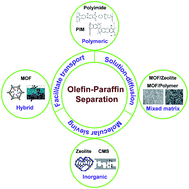
J. Mater. Chem. A, 2019,7, 23489-23511
https://doi.org/10.1039/C9TA06329C
Hydrogen-bonded diketopyrrolopyrrole derivatives for energy-related applications
The impact of H-bonding on the optoelectronic properties and device morphology of diketopyrrolopyrrole derivatives is reviewed.

J. Mater. Chem. A, 2019,7, 23451-23475
https://doi.org/10.1039/C9TA05236D
Recent advances in exfoliation techniques of layered and non-layered materials for energy conversion and storage
Recent advances in exfoliation techniques of layered and non-layered materials for energy conversion and storage are summarized.

J. Mater. Chem. A, 2019,7, 23512-23536
https://doi.org/10.1039/C9TA06461C
Interfacial effects in supported catalysts for electrocatalysis
Significant efforts have been devoted to design and develop supported catalysts for electrochemical energy conversion and storage systems since they have enhanced electrocatalytic activity.

J. Mater. Chem. A, 2019,7, 23432-23450
https://doi.org/10.1039/C9TA04888J
Scalable nanomanufacturing of inkjet-printed wearable energy storage devices
The nanomaterial-based wearable energy storage devices will usher in exciting opportunities in emerging technologies such as consumer electronics, pervasive computing, human–machine interface, robotics, and the Internet of Things.

J. Mater. Chem. A, 2019,7, 23280-23300
https://doi.org/10.1039/C9TA05239A
From fullerene acceptors to non-fullerene acceptors: prospects and challenges in the stability of organic solar cells
This review highlights the opportunities and challenges in stability of organic solar cells arising from the emergence of non-fullerene acceptors.

J. Mater. Chem. A, 2019,7, 23361-23377
https://doi.org/10.1039/C9TA05235F
Ambient dinitrogen electrocatalytic reduction for ammonia synthesis
Recent advances in the fabrication of novel electrocatalysts for dinitrogen reduction to ammonia synthesis under ambient conditions are comprehensively reviewed.

J. Mater. Chem. A, 2019,7, 23416-23431
https://doi.org/10.1039/C9TA05505C
Organic quinones towards advanced electrochemical energy storage: recent advances and challenges
This review provides an up-to-date summary of the progress of organic quinones as electroactive materials for advanced electrochemical energy storage devices.

J. Mater. Chem. A, 2019,7, 23378-23415
https://doi.org/10.1039/C9TA05252F
Viologen-inspired functional materials: synthetic strategies and applications
Viologen-inspired aromatic molecules, polymers, and functional materials and their versatile applications will be introduced in this review.
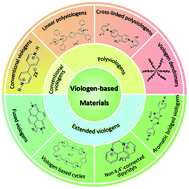
J. Mater. Chem. A, 2019,7, 23337-23360
https://doi.org/10.1039/C9TA01724K
Self-supported nanostructured iridium-based networks as highly active electrocatalysts for oxygen evolution in acidic media
IrOx-networks exhibit excellent catalytic activity towards oxygen evolution in acid media. A novel alternating sputtering process enabled simple and scalable fabrication of self-supported and highly dispersed iridium networks.

J. Mater. Chem. A, 2020,8, 1066-1071
https://doi.org/10.1039/C9TA12796H
Revealing structural evolution of PbS nanocrystal catalysts in electrochemical CO2 reduction using in situ synchrotron radiation X-ray diffraction
In situ synchrotron radiation X-ray diffraction studies reveal reaction environment-induced PbS–PbCO3–Pb evolution under eCO2RR conditions. The produced Pb nanocatalyst exhibits 97.6% FE (−1.2 V) and 74.9 mA mgPb−1 MA (−1.4 V).

J. Mater. Chem. A, 2019,7, 23775-23780
https://doi.org/10.1039/C9TA06750G
Band gap modulation in zirconium-based metal–organic frameworks by defect engineering
A simple defect engineering approach to systematically tune the band gap of the prototypical zirconium-based metal–organic framework UiO-66 is reported. Defect engineered materials display enhanced photocatalytic activity.

J. Mater. Chem. A, 2019,7, 23781-23786
https://doi.org/10.1039/C9TA05216J
Elucidating metal and ligand redox activities of a copper-benzoquinoid coordination polymer as the cathode for lithium-ion batteries
A novel 1D copper-benzoquinoid coordination polymer with both metal and ligand redox activities delivered a capacity as high as 268 mA h g−1.

J. Mater. Chem. A, 2019,7, 23770-23774
https://doi.org/10.1039/C9TA05244E
Inertial effective mass as an effective descriptor for thermoelectrics via data-driven evaluation
Data-driven analysis shows that low effective mass is favorable for high band degeneracy and power factor towards new thermoelectric materials.
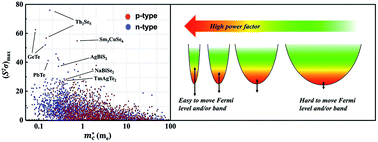
J. Mater. Chem. A, 2019,7, 23762-23769
https://doi.org/10.1039/C9TA05967A
Comparisons of WO3 reduction to HxWO3 under thermochemical and electrochemical control
In situ optical microscopy measurements show that thermochemical H-spillover and electrochemical H-intercalation in tungsten oxide proceed by a congruent mechanism at room temperature in the presence of an acidic electrolyte.

J. Mater. Chem. A, 2019,7, 23756-23761
https://doi.org/10.1039/C9TA06394C
Graphene quantum dots/graphene fiber nanochannels for osmotic power generation
Graphene quantum dots were intercalated into graphene fiber nanochannel as a nano-charger for high surface charge density. The hybrid nanochannel shows efficient ion transport behaviors and ion selectivity facilitating superior osmotic power generation.
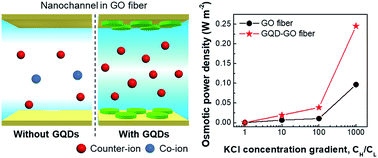
J. Mater. Chem. A, 2019,7, 23727-23732
https://doi.org/10.1039/C9TA05242A
Tin nanoparticles embedded in a carbon buffer layer as preferential nucleation sites for stable sodium metal anodes
High-capacity sodium anodes with long-term reversibility and stability are presented by synthesizing tin nanoparticles homogeneously embedded within a conductive carbon network.

J. Mater. Chem. A, 2019,7, 23747-23755
https://doi.org/10.1039/C9TA05176G
Self-assembled propylammonium cations at grain boundaries and the film surface to improve the efficiency and stability of perovskite solar cells
Large size cation (PA) was introduced into the grain boundary and film surface of the 3D perovskite to improve the solar cell efficiency and moisture stability.

J. Mater. Chem. A, 2019,7, 23739-23746
https://doi.org/10.1039/C9TA01755K
Hollow TiO2 submicrospheres assembled by tiny nanocrystals as superior anode for lithium ion battery
Hollow TiO2 submicrospheres assembled by 10 nm-sized units via a facile hydrothermal strategy exhibit excellent rate capability and long-term stability.

J. Mater. Chem. A, 2019,7, 23733-23738
https://doi.org/10.1039/C9TA02279A
Boron-nitride/carbon-nanotube hybrid aerogels as multifunctional desulfurisation agents
Porous boron nitride particles were embedded within carbon nanotube aerogels to produce electrically-conducting sorbents that combine remarkable desulfurisation performance with the capability for rapid, energy-efficient Joule-heating regeneration.
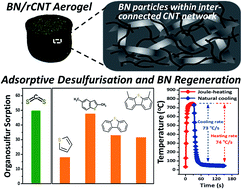
J. Mater. Chem. A, 2019,7, 24027-24037
https://doi.org/10.1039/C9TA06599G
Lattice strain and texture analysis of superhard Mo0.9W1.1BC and ReWC0.8via diamond anvil cell deformation
Mo0.9W1.1BC and ReWC0.8 are compressed nonhydrostatically to explore anisotropic deformation behavior and better comprehend hard materials. Slip is likely dictated by planar density in ReWC0.8 and directional covalent B–B chains in Mo0.9W1.1BC.

J. Mater. Chem. A, 2019,7, 24012-24018
https://doi.org/10.1039/C9TA06431A
Reversible control of magnetism: on the conversion of hydrated FeF3 with Li to Fe and LiF
Coupled CV/SQUID measurements allow tracing the changes in magnetization during conversion reaction of FeF3·3H2O in a Li-ion cell.

J. Mater. Chem. A, 2019,7, 24005-24011
https://doi.org/10.1039/C9TA08928D
Assessing negative thermal expansion in mesoporous metal–organic frameworks by molecular simulation
Molecular simulations reveal that mesoporous metal–organic frameworks display large volumetric negative thermal expansion, which has a considerable effect on mechanical stability, outlining an alternative application for these ultra-porous materials.

J. Mater. Chem. A, 2019,7, 24019-24026
https://doi.org/10.1039/C9TA06644F
Improving selectivity of CO reduction via reducing the coordination of critical intermediates
Reducing the coordination of critical intermediates can improve the selectivity of electrochemical CO reduction.

J. Mater. Chem. A, 2019,7, 24000-24004
https://doi.org/10.1039/C9TA06529F
A carbon dot-catalyzed transesterification reaction for the production of biodiesel
Biodiesel fuel production remains one of the most promising alternatives to non-renewable fossil fuels such as conventional oil and diesel.

J. Mater. Chem. A, 2019,7, 23794-23802
https://doi.org/10.1039/C9TA05245C
Single-phase Ni5P4–copper foam superhydrophilic and aerophobic core–shell nanostructures for efficient hydrogen evolution reaction
A facile route for electrochemical synthesis of single-phase Ni5P4 on copper foam results in a core-shell nanostructures catalyst for the efficient generation of hydrogen with a very less overpotential and excellent stability at high current density.

J. Mater. Chem. A, 2019,7, 23989-23999
https://doi.org/10.1039/C9TA06729A
Understanding the characteristics of conducting polymer-redox biopolymer supercapacitors
A model is developed to explain and predict the characteristics of conducting polymer-redox biopolymer supercapacitors.
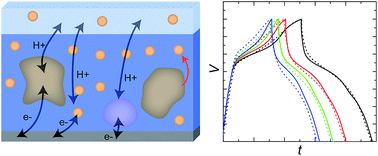
J. Mater. Chem. A, 2019,7, 23973-23980
https://doi.org/10.1039/C9TA07030C
Cryptomelane K1.33Mn8O16 as a cathode for rechargeable aqueous zinc-ion batteries
Reversible intercalation of Zn ions in tetragonal K1.33Mn8O16 delivers 312 mA h g−1 capacity at a galvanostatic cycling rate of 0.1C with an average voltage of 1.5 V.
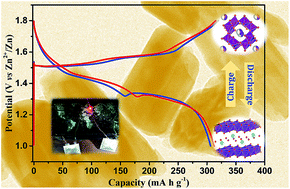
J. Mater. Chem. A, 2019,7, 23981-23988
https://doi.org/10.1039/C9TA05836B
Enhanced structural stability and overall conductivity of Li-rich layered oxide materials achieved by a dual electron/lithium-conducting coating strategy for high-performance lithium-ion batteries
A dual coating of LATP and CNTs accelerates the transportation of Li+ and electrons, resulting in improved rate capability.
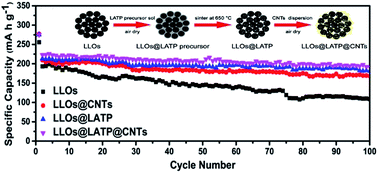
J. Mater. Chem. A, 2019,7, 23964-23972
https://doi.org/10.1039/C9TA04551A
Chemo-mechanical degradation in V2O5 thin film cathodes of Li-ion batteries during electrochemical cycling
We have devised an approach to fabricate dense textured V2O5 thin films, which allows us to scrutinize the root cause of capacity fade in V2O5 cathodes of Li-ion batteries.

J. Mater. Chem. A, 2019,7, 23922-23930
https://doi.org/10.1039/C9TA05243G
The effect of structural dimensionality on carrier mobility in lead-halide perovskites
Changes in perovskite structural dimensionality brought by mixing A-site cations play an important role in determining the measured charge carrier mobility, and in the solar cell performance.

J. Mater. Chem. A, 2019,7, 23949-23957
https://doi.org/10.1039/C9TA05241K
Structural engineering to maintain the superior capacitance of molybdenum oxides at ultrahigh mass loadings
An ultrahigh loaded MoO3−x electrode was developed with improved rate capability through incorporating layered structure graphite sheets and oxygen functional groups.

J. Mater. Chem. A, 2019,7, 23941-23948
https://doi.org/10.1039/C9TA04835A
High yield electrochemical exfoliation synthesis of tin selenide quantum dots for high-performance lithium-ion batteries
We report cathodic exfoliation of bulk SnSe for a high yield (>90%) synthesis of sub-5 nm scale SnSe quantum dots.

J. Mater. Chem. A, 2019,7, 23958-23963
https://doi.org/10.1039/C9TA04643G
Porous boron nitride for combined CO2 capture and photoreduction
Moving from hexagonal boron nitride (h-BN), a well-known crystalline insulator, to amorphous BN, leads to the creation of a semiconductor able to photoreduce CO2 in the gas/solid phase, under UV-vis and pure visible light.

J. Mater. Chem. A, 2019,7, 23931-23940
https://doi.org/10.1039/C9TA02793A
Visualizing percolation and ion transport in hybrid solid electrolytes for Li–metal batteries
Hybrid solid state electrolyte structure was imaged using synchrotron nanotomography. Accessible surface area of ceramic particles in the electrolytes governs ion transport.

J. Mater. Chem. A, 2019,7, 23914-23921
https://doi.org/10.1039/C9TA05118J
Origins of boron catalysis in peroxymonosulfate activation and advanced oxidation
Amorphous boron is employed as a novel and high-performance metal-free catalyst for activation of peroxymonosulfate for degrading various organic contaminants in water.

J. Mater. Chem. A, 2019,7, 23904-23913
https://doi.org/10.1039/C9TA04885E
Nanosheets assembled into nickel sulfide nanospheres with enriched Ni3+ active sites for efficient water-splitting and zinc–air batteries
Nanosheets assembled into nickel sulfide nanospheres were synthesized in a controlled manner, and exhibited superior tri-functional activities owing to optimized binding with hydrogen/oxygen intermediates.

J. Mater. Chem. A, 2019,7, 23787-23793
https://doi.org/10.1039/C9TA03819A
A polyaspartic acid sodium interfacial layer enhances surface trap passivation in perovskite solar cells
A biopolymer PASP layer works effectively to passivate the surface traps in MAPbI3 perovskite solar cells.

J. Mater. Chem. A, 2019,7, 23895-23903
https://doi.org/10.1039/C9TA01947B
Rational construction of MoS2/Mo2N/C hierarchical porous tubular nanostructures for enhanced lithium storage
The fabrication of a unique heterostructure composed of MoS2/Mo2N with nitrogen doped carbon was synthesized by a stepwise cooperative assembly-directed strategy.

J. Mater. Chem. A, 2019,7, 23886-23894
https://doi.org/10.1039/C9TA04516C
Confinement of subnanometric PdZn at a defect enriched ZnO/ZIF-8 interface for efficient and selective CO2 hydrogenation to methanol
Subnanometric PdZn at a defect enriched ZnO/ZIF-8 interface acts as an efficient and selective catalyst for CO2 hydrogenation to methanol.

J. Mater. Chem. A, 2019,7, 23878-23885
https://doi.org/10.1039/C9TA03410B
Selectivity for ethanol partial oxidation: the unique chemistry of single-atom alloy catalysts on Au, Ag, and Cu(111)
Doping of a strong-binding single-atom element into inert close-packed substrates leads to highly active and selective initial dehydrogenation at the α-C–H site of adsorbed ethanol.

J. Mater. Chem. A, 2019,7, 23868-23877
https://doi.org/10.1039/C9TA04572D
A CoHCF system with enhanced energy conversion efficiency for low-grade heat harvesting
Cobalt hexacyanoferrate (CoHCF) materials were used for TRECs; when complexed with HCNTs they show higher heat-to-electricity conversion efficiency.
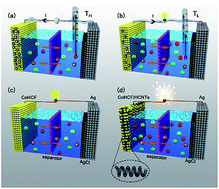
J. Mater. Chem. A, 2019,7, 23862-23867
https://doi.org/10.1039/C9TA02426C
Revealing structure–activity links in hydrazine oxidation: doping and nanostructure in carbide–carbon electrocatalysts
To expand the range of hydrazine oxidation catalysts active in alkaline pH – a key challenge in fuel cell electrocatalysis – we studied the effect of doping on the nanostructure of carbide–carbon composites.
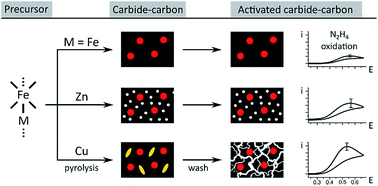
J. Mater. Chem. A, 2019,7, 23854-23861
https://doi.org/10.1039/C9TA03357B
Post-synthesis deposition of mesoporous niobic acid with improved thermal stability by kinetically controlled sol–gel overcoating
An ordered mesoporous niobia catalyst is synthesized by niobia overcoating on silica and shows high activity and stability for acid catalysis.
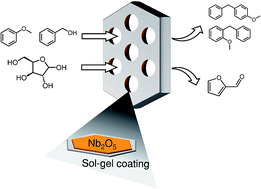
J. Mater. Chem. A, 2019,7, 23803-23811
https://doi.org/10.1039/C9TA01459D
Discovery of a self-healing catalyst for the hydrolytic dehydrogenation of ammonia borane
Sustainable catalysts based on earth-abundant elements are considered as economical alternatives to precious-metal-bearing catalysts and could be impactful for many applications.

J. Mater. Chem. A, 2019,7, 23830-23837
https://doi.org/10.1039/C9TA02123J
How far does the defect tolerance of lead-halide perovskites range? The example of Bi impurities introducing efficient recombination centers
Experimental and theoretical study on the effect of shallow and deep defects on photovoltaic performance, luminescence, surface photovoltage, and density of states.
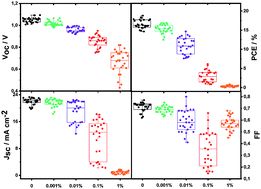
J. Mater. Chem. A, 2019,7, 23838-23853
https://doi.org/10.1039/C9TA01744E
Preparation and characterization of crosslinked poly(vinylimidazolium) anion exchange membranes for artificial photosynthesis
The dependence of small molecule transport on the water content of ion exchange materials frustrates the development of membranes with both high ionic conductivity and low alcohol permeability for artificial photosynthesis devices.

J. Mater. Chem. A, 2019,7, 23818-23829
https://doi.org/10.1039/C9TA00498J
Ultra-stable 4H-gold nanowires up to 800 °C in a vacuum
The in situ TEM observation disclosed that the 4H-phase Au nanowire can maintain stable ABCB stacking up to 800 °C without significant phase changes or melting.

J. Mater. Chem. A, 2019,7, 23812-23817
https://doi.org/10.1039/C9TA01306G
About this collection
Journal of Materials Chemistry A is proud to present this themed issue highlighting 2019’s rising stars of materials chemistry research. This issue gathers the very best work from materials chemists in the early stages of their independent career.
Each contributor was recommended by experts in their fields as carrying out work with the potential to influence future directions in materials chemistry. Congratulations to all of those who feature on their important work so far in the field of materials energy and sustainability.